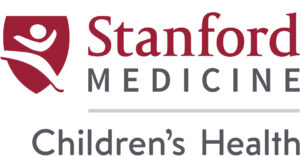We’re No. 1 in Transplantation
In newly released 2015 data from the Organ Procurement and Transplantation Network, the transplant center at Lucile Packard Children’s Hospital Stanford and Stanford Children’s Health is once again confirmed as the national leader in pediatric organ transplantation.
The organization, which supports ongoing evaluation of the status of solid organ transplantation in the United States, noted the following achievements for the hospital in 2014:
- No. 1 in pediatric organ transplant volume in the United States, with 91 organs transplanted. Lucile Packard Children’s Hospital performs liver, kidney, heart and lung transplants, as well as combined-organ transplants in which two organs, such as heart and lungs or liver and intestine, are given to the same patient in a single surgery.
- No. 1 in liver transplant volume in the United States. Also, the liver transplant program’s outcomes exceed the national average, with three-year patient survival rates at 100 percent for the last five data-reporting periods.
- No. 1 in kidney transplant volume in the western United States. Also, the kidney transplant program’s outcomes exceed the national average with one- and three-year patient survival rates at 100 percent for the last five data-reporting periods.
- No. 1 in heart transplant volume on the West Coast. In addition, the heart transplant team implanted 13 ventricular-assist devices, which help extend the lives of patients until they’re able to receive a donor heart.
“This report speaks to our phenomenal experience,” said Carlos Esquivel, MD, PhD, “and experience saves lives.” Esquivel, who is the Arnold and Barbara Silverman Professor in Pediatric Transplantation and chief of abdominal transplantation at the Stanford School of Medicine, noted the OPTN data prove that, “Stanford’s clinical and research excellence and our 15 outreach locations enable us to perform the most transplants in the nation.”
That outreach saves the lives of kids like 9-year-old Braylin Soon, of Portland, Oregon. Braylin was diagnosed with liver failure last May and received a lifesaving transplant at Lucile Packard Children’s Hospital two weeks later. “She’s now doing very well,” said mom, Delinah, who flew with Braylin on an emergency medical flight from Portland to Palo Alto after diagnosis. “The team was very thorough and genuine in their care, and this gave us great comfort at an extremely scary time.”
Stanford’s history of innovation in transplant is deep, including the advancement of a broad range of options and techniques to increase the pool of organ donors, thus minimizing wait times and providing children with a better chance for a healthy life. “We are very proud of having shorter median wait times for transplants than the United States average,” added Esquivel, who has been performing transplants for over 30 years.
“Our transplant teams represent the best in transplant innovation,” said gastroenterologist Kenneth Cox, MD, medical director of the pediatric liver transplant program and professor of pediatrics at the Stanford School of Medicine. “Each is a leader in world-class care and extraordinary outcomes, and our patient families are very grateful.”
And what about the future? “Well, we just performed three kidney transplants, one liver transplant and one combined liver-kidney transplant in just over 72 hours,” said Deb Strichartz, administrative director of the pediatric transplant center.
Sounds like 2015 could be even busier than 2014.
This article first appearted on the Healthier, Happier Lives Blog on stanfordchildrens.org.

